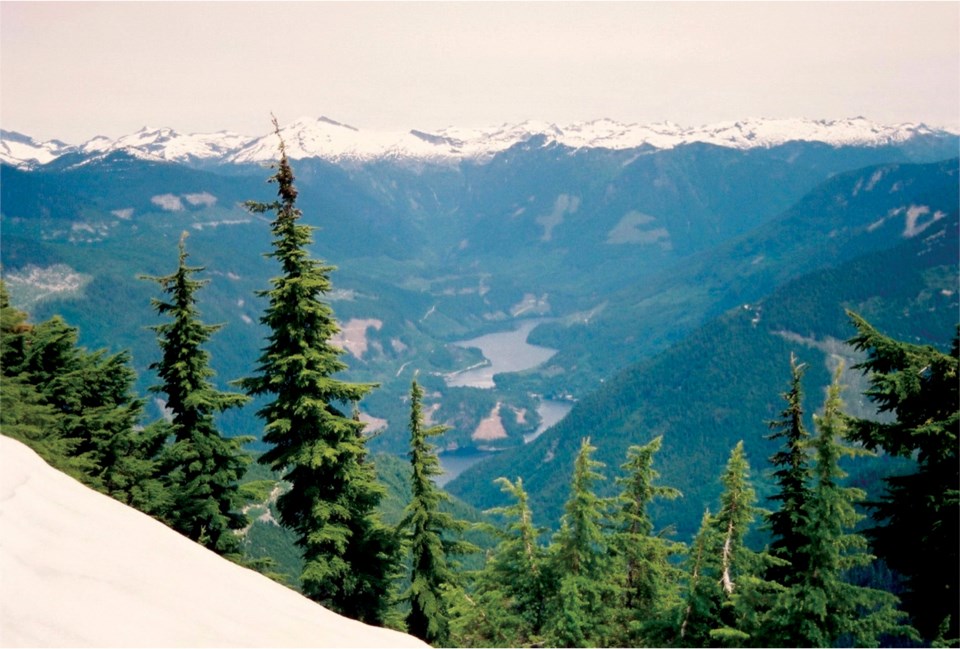If Clowhom Lake becomes the primary source of drinking water for the Sunshine Coast, “we would never have to worry about water again.”
That was the pitch given to Sunshine Coast Regional District (SCRD) directors by Al Jenkins last Thursday. The chair of West Sechelt Community Association appeared as a delegation at an infrastructure meeting to urge directors to consider the lake as a long-term solution to the SCRD’s water shortage.
The lake, which functions as a reservoir for BC Hydro, is situated at the top of Salmon Inlet, about 32 kilometres northeast of Sechelt. The watershed is 42 times larger than Chapman and is the fastest recharging reservoir in BC Hydro’s system, according to Jenkins.
“Increasing demand and a dire warning about climate change requires us to keep our options open,” Jenkins told directors before diving into the presentation.
He provided two options to access the lake water.
The first option would connect Clowhom Lake to SCRD infrastructure through a submerged water transmission line running from Salmon Inlet to Sechelt.
The second option would involve installing a pipeline to Lake Nine to create a reservoir, then tunnelling two kilometres through a mountain and under Tetrahedron Provincial Park to Rainy Lake where the water would flow down Rainy River to Port Mellon and then to Langdale or through to Dakota Ridge into a new reservoir within the Chapman system.
Several independent power projects use the watershed and 10 active water licences apply in the area; however, no restrictions would prohibit the SCRD from using the lake for drinking water.
BC Hydro has the right to use water in Clowhom Lake to the top of an installed dam, meaning the SCRD would only be able to access water flowing over the dam, which SCRD infrastructure manager Remko Rosenboom said would necessitate the creation of a reservoir since those flows would be seasonal.
Aside from the engineering challenges, Jenkins noted that cost would be a major barrier to the project. “The big question is the money,” he said.
Rosenboom confirmed that a consultant’s report that was part of the 2012 Comprehensive Regional Water Plan estimated a cost of between $73 and $123 million to access Clowhom water. He suggested that by now the price tag would be 50 per cent higher, and that Jenkins’ plan was “more or less” the same as the previous proposal.
But Sechelt Mayor Darnelda Siegers disagreed. She pointed out that Jenkins’ second option, which would see the water piped over land, was different. “There’s other options and further information that I think needs to go forward on this proposal,” she said.
Jenkins admitted Clowhom was a “very expensive business,” but pressed the board to “investigate this one carefully just to get some ballpark numbers,” adding that the previous cost estimates “are pretty stale.”
Siegers said the board recognizes they must look at both short- and long-term solutions and later added that long-term solutions would be considered as local governments convene to establish plans for water security and regional water governance.
At the end of his talk, Jenkins emphasized the need to think long term, advising directors look 50 years ahead, and pointing to a growing population and ongoing development projects. “We’ve got 2,000 developments on the books in Sechelt as we sit here. That’s a lot of toilets.”



